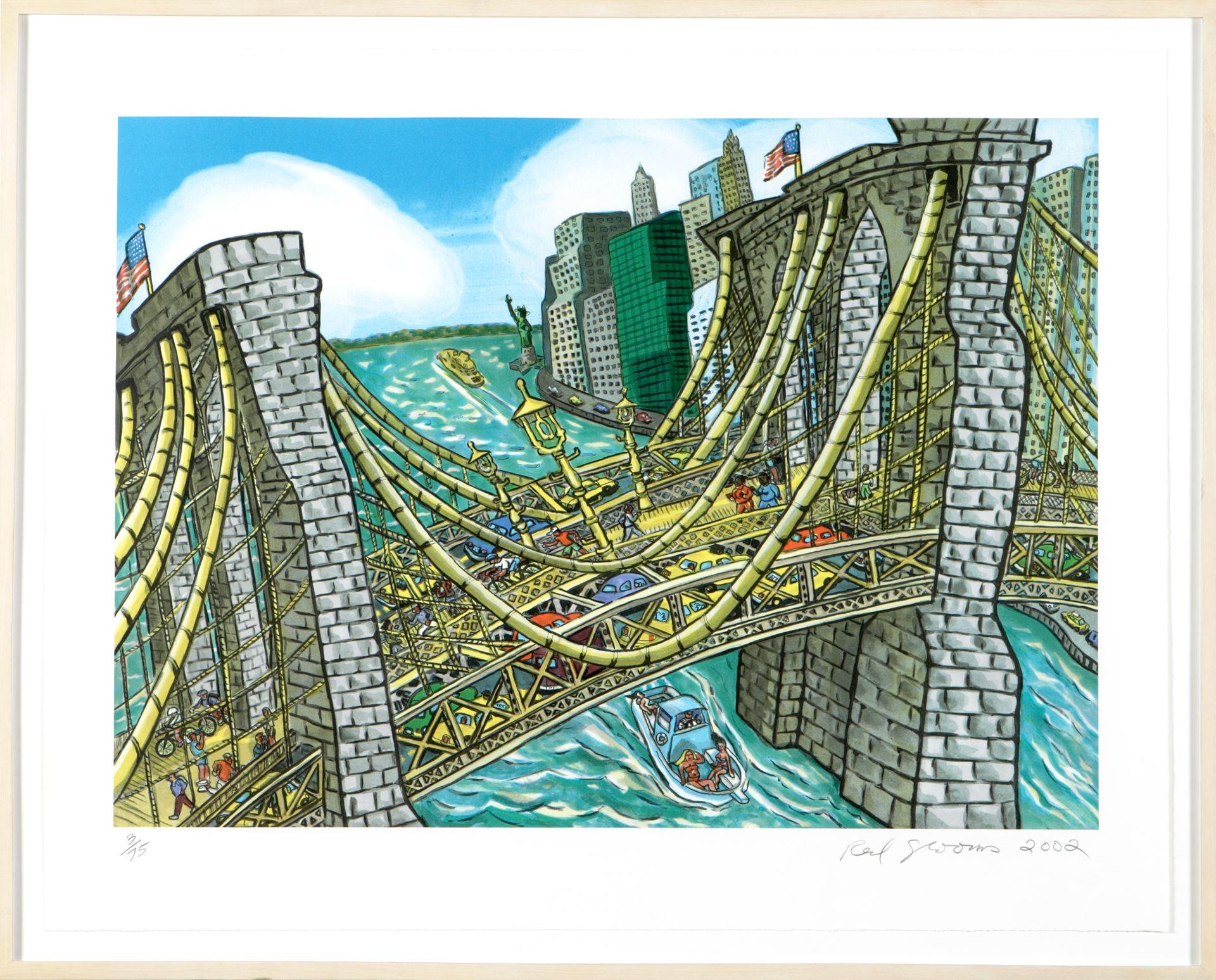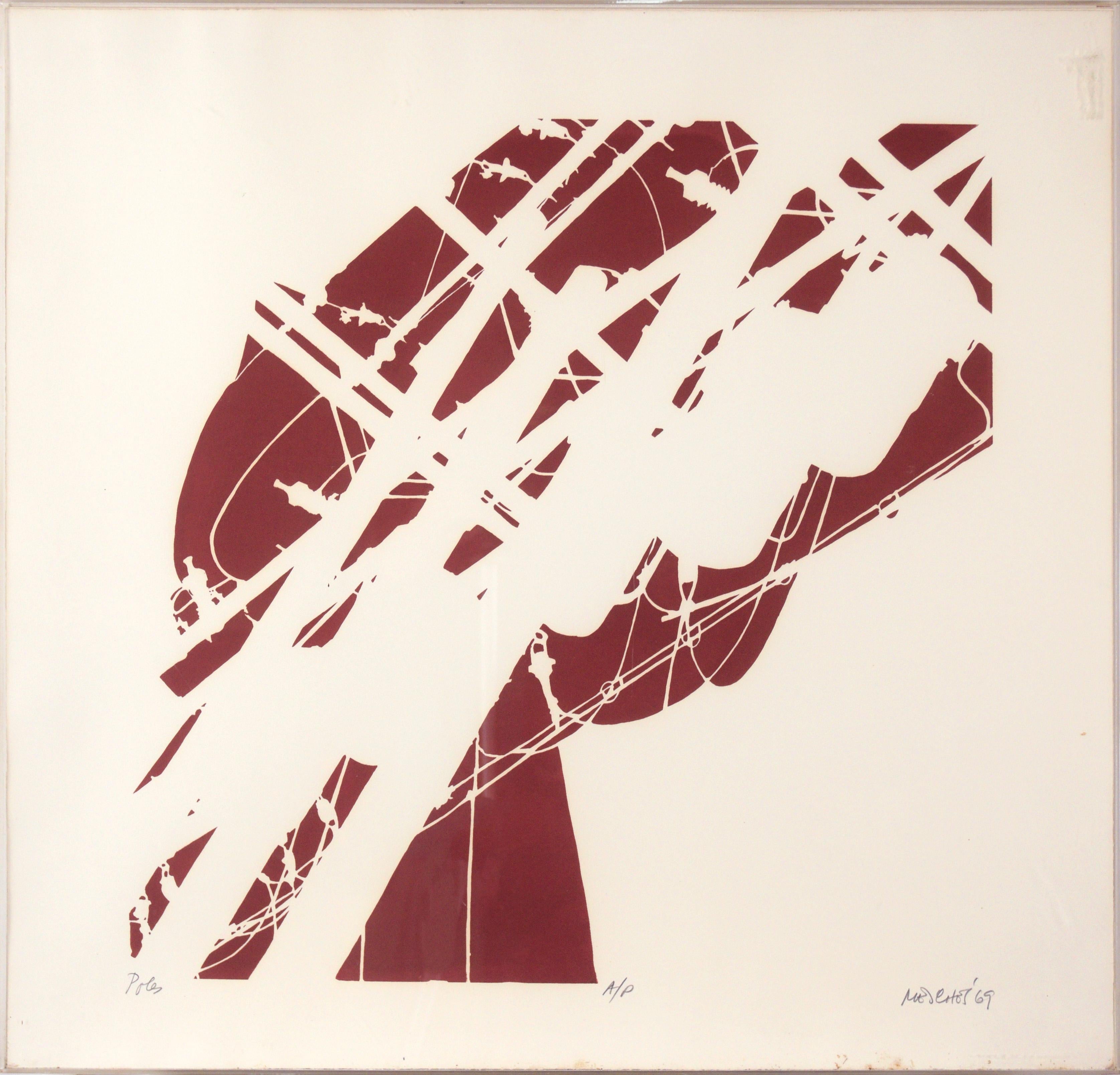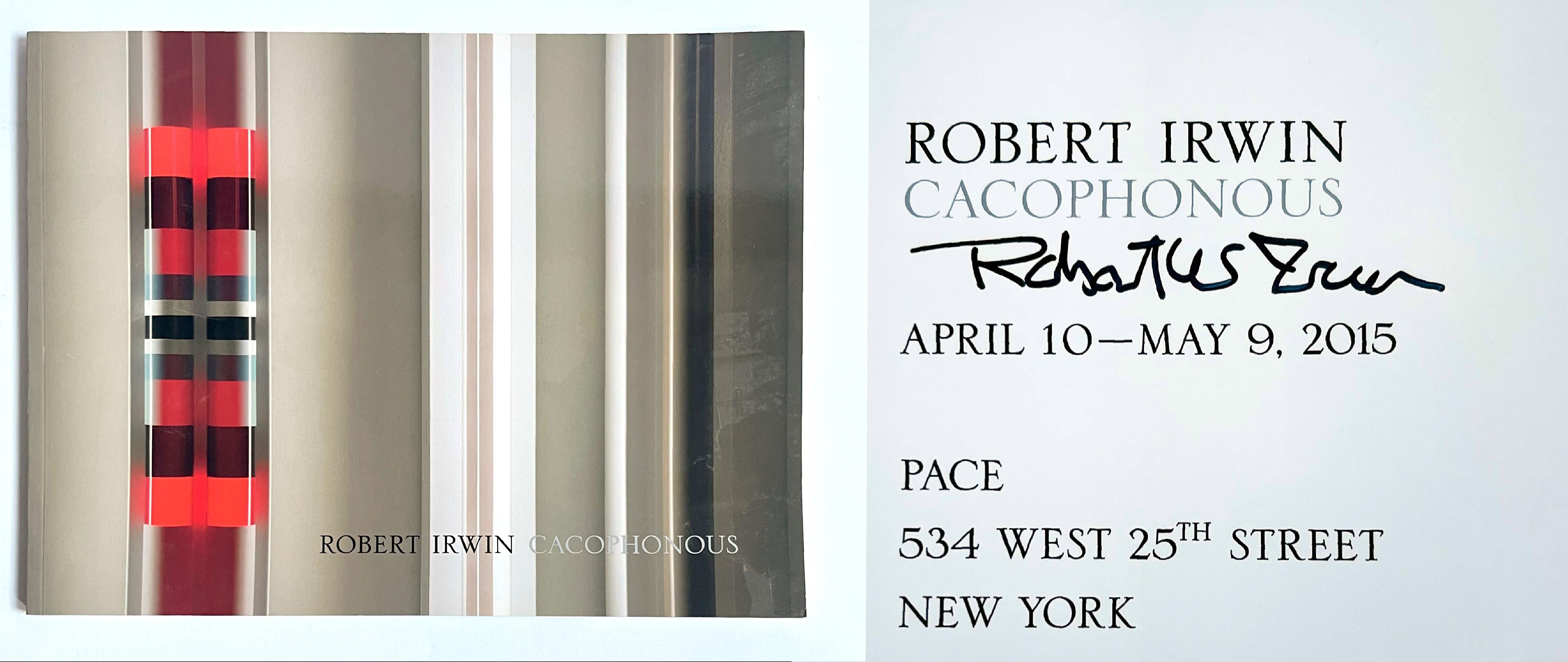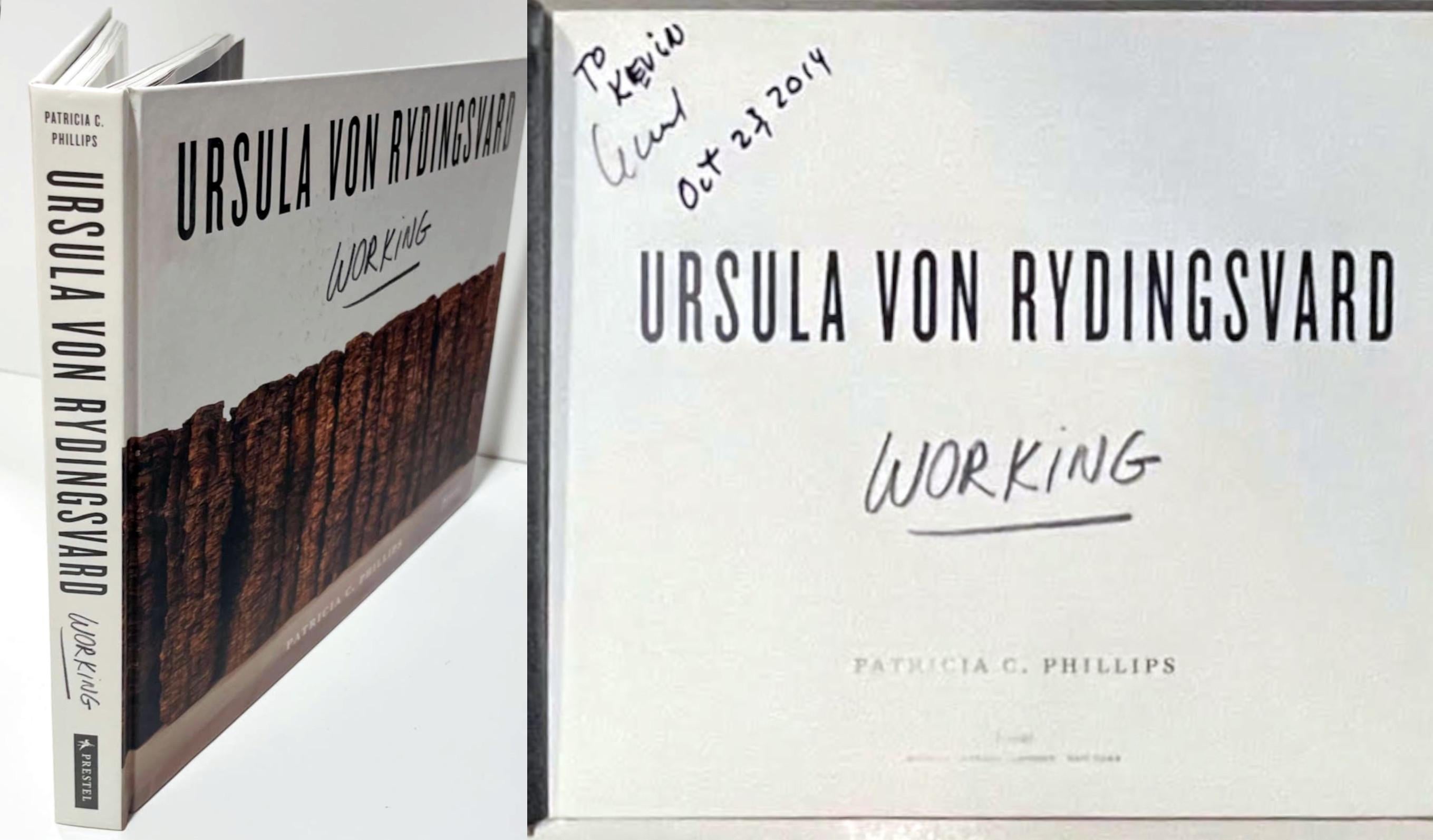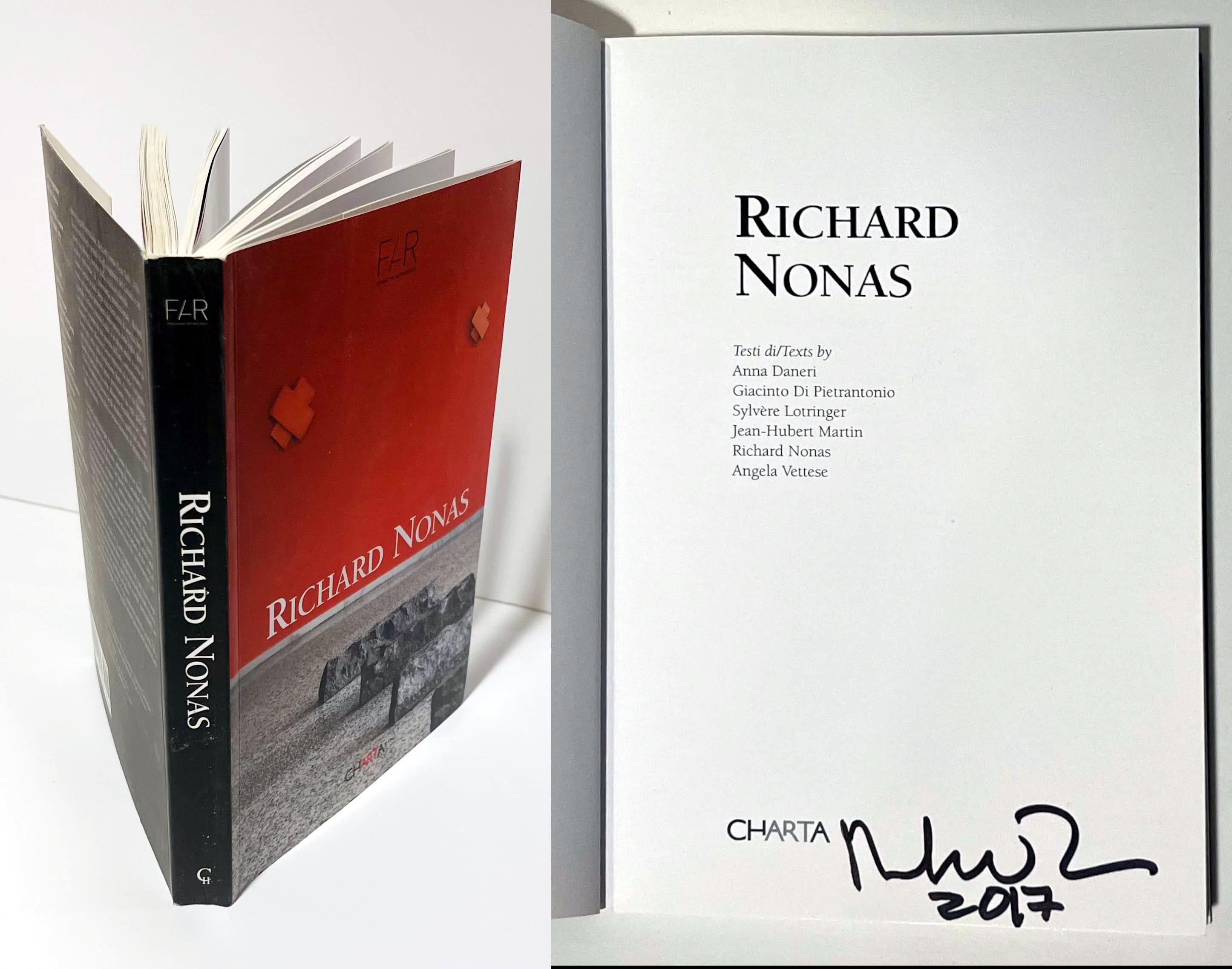Items Similar to "Unknown Path" from Wanderers Illustrations
Want more images or videos?
Request additional images or videos from the seller
Stanley Lewis"Unknown Path" from Wanderers Illustrations 1964
1964
About the Item
Stanley Lewis was a Jewish Canadian sculptor, photographer and an internationally renowned art teacher born on March 28, 1930 in Montreal. His works are held in many public collections such as the Montreal Museum of Fine Arts, the Musée national des beaux-arts du Québec[1], and the National Gallery of Canada, as well as in numerous private collections.[2] Since the 1950, Lewis' sculptures and lithographic works have been displayed in the galleries and museums around the world in cities such as Paris, Florence, New York City, and Mexico City.
Lewis died on August 14, 2006 at the Montreal Jewish General Hospital due to a heart failure.
He is survived by his sister, Sheila Lewis Kanter, and his daughter, Alyssa (Reid) Savage.
Stanley Lewis received his formal training through the art school at the Montreal museum of fine arts by artists such as Arthur Lismer, a member of the Group of Seven, and Jacques de Tonnancour. Graduating first in his class, he continued in his studies at the l'Instituto Allende de San Miguel, in Mexico at the workshop of the Master Florentine marble sculptor V. Gambacciani and at the Ein Hod Artist's Colony in Israel. During his travels in Florence, Lewis met Irving Stone who was in turn significantly influenced by Lewis' work, stating "Lewis taught me how to make a chisel fly across marble, and why a sculptor, to be great, has to be a poet as well." In fact, Stone's interest in Lewis' sculpting and research work on the sculptor Michelangelo led to their collaboration on the novel The Agony and the Ecstasy, one of Stone's most well known works.
Lewis was a pioneer in colour lithography in Canada, using different lithographic stones for each transparent ink color to give a gradual transitional effect in the print. He was also interested in art of the Italian Renaissance and Inuit sculpture, spending several winters in the Canadian arctic to perfect his artistic skills.
Lewis was in charge of the Department of Sculpture at the Saidye Bronfman Centre School of the Fine Arts in Montreal. He also taught fine arts at the Museum of Quebec as well as McGill University. Starting in the 1960s, Stanley Lewis was a founding member of the Quebec Sculptors Association (l'Association des sculpteurs du Québec), renamed the Conseil de la Sculpture du Québec in 1978, which organized annual exhibitions or "Confrontations" to showcase area sculptors such as Mario Merola and Hannah Franklin.
Lewis is perhaps most broadly known for his work with Irving Stone during the latter's research for this novel, The Agony and the Ecstasy. In the late 1950s, he travelled with Stone to Italy, reproducing the sculptural tools and techniques Michelangelo used to help the novelist with his work of biographical fiction.
Even though he was an avid world traveller, Lewis always returned to Montreal to his studio above Berson Monuments, a gravestone carving company on Saint-Laurent Boulevard, which he said was "a constant reminder that we are mortal souls but our creations are timeless." The studio was considered an important hub and meeting place for artists and up until his death Lewis was an important figure and cornerstone to the Montreal art and Jewish community.
Lewis was also a regular customer of the Main Deli Steak House and Schwartz's, which are both located next to his studio.
After the 1989 massacre at the Montreal Polytechnic, Lewis donated one of his sculpture as a memorial to the victims.
After his death, two sculptors, including Quebec sculptor Eugène Jankowski, founded the Stanly-Lewis Academie in Montreal (l'Académie Stanley-Lewis à Montréal) in 2007.
- Creator:Stanley Lewis (1941, American)
- Creation Year:1964
- Dimensions:Height: 9.6 in (24.39 cm)Width: 13.8 in (35.06 cm)
- Medium:
- Period:
- Condition:Some minor toning. Please see photos.
- Gallery Location:Surfside, FL
- Reference Number:1stDibs: LU3826172402
About the Seller
4.9
Platinum Seller
These expertly vetted sellers are 1stDibs' most experienced sellers and are rated highest by our customers.
Established in 1995
1stDibs seller since 2014
1,549 sales on 1stDibs
Typical response time: 1 hour
- ShippingRetrieving quote...Ships From: Surfside, FL
- Return PolicyA return for this item may be initiated within 3 days of delivery.
More From This SellerView All
- "Through The Wadi" from Wanderers Illustrations 112/225By Stanley LewisLocated in Surfside, FLStanley Lewis was a Jewish Canadian sculptor, photographer and an internationally renowned art teacher born on March 28, 1930 in Montreal. His works are held in many public collectio...Category
1960s Abstract Prints
MaterialsBlack and White, Lithograph, Ink
- "Into the Distance" from Wanderers Illustrations 112/225By Stanley LewisLocated in Surfside, FLStanley Lewis was a Jewish Canadian sculptor, photographer and an internationally renowned art teacher born on March 28, 1930 in Montreal. His works are held in many public collections such as the Montreal Museum of Fine Arts, the Musée national des beaux-arts du Québec[1], and the National Gallery of Canada, as well as in numerous private collections.[2] Since the 1950, Lewis' sculptures and lithographic works have been displayed in the galleries and museums around the world in cities such as Paris, Florence, New York City, and Mexico City. Lewis died on August 14, 2006 at the Montreal Jewish General Hospital due to a heart failure. He is survived by his sister, Sheila Lewis Kanter, and his daughter, Alyssa (Reid) Savage. Stanley Lewis received his formal training through the art school at the Montreal museum of fine arts by artists such as Arthur Lismer, a member of the Group of Seven, and Jacques de Tonnancour. Graduating first in his class, he continued in his studies at the l'Instituto Allende de San Miguel, in Mexico at the workshop of the Master Florentine marble sculptor V. Gambacciani and at the Ein Hod Artist's Colony in Israel. During his travels in Florence, Lewis met Irving Stone who was in turn significantly influenced by Lewis' work, stating "Lewis taught me how to make a chisel fly across marble, and why a sculptor, to be great, has to be a poet as well." In fact, Stone's interest in Lewis' sculpting and research work on the sculptor Michelangelo led to their collaboration on the novel The Agony and the Ecstasy, one of Stone's most well known works. Lewis was a pioneer in colour lithography in Canada, using different lithographic stones for each transparent ink color to give a gradual transitional effect in the print. He was also interested in art of the Italian Renaissance and Inuit sculpture, spending several winters in the Canadian arctic to perfect his artistic skills. Lewis was in charge of the Department of Sculpture at the Saidye Bronfman Centre School of the Fine Arts in Montreal. He also taught fine arts at the Museum of Quebec as well as McGill University. Starting in the 1960s, Stanley Lewis was a founding member of the Quebec Sculptors Association (l'Association des sculpteurs du Québec), renamed the Conseil de la Sculpture du Québec in 1978, which organized annual exhibitions or "Confrontations" to showcase area sculptors such as Mario Merola and Hannah Franklin. Lewis is perhaps most broadly known for his work with Irving Stone during the latter's research for this novel, The Agony and the Ecstasy. In the late 1950s, he travelled with Stone to Italy, reproducing the sculptural tools and techniques Michelangelo used to help the novelist with his work of biographical fiction. Even though he was an avid world traveller, Lewis always returned to Montreal to his studio above Berson Monuments, a gravestone carving company on Saint-Laurent Boulevard, which he said was "a constant reminder that we are mortal souls but our creations are timeless." The studio was considered an important hub and meeting place for artists and up until his death Lewis was an important figure and cornerstone to the Montreal art and Jewish community. Lewis was also a regular customer of the Main Deli Steak House...Category
1960s Abstract Prints
MaterialsBlack and White, Lithograph, Ink
- "To The Water Source" from Wanderers Illustrations 112/225By Stanley LewisLocated in Surfside, FLStanley Lewis was a Jewish Canadian sculptor, photographer and an internationally renowned art teacher born on March 28, 1930 in Montreal. His works are held in many public collectio...Category
1960s Abstract Prints
MaterialsInk, Black and White, Lithograph
- "Onto The Sands" from Wanderers Illustrations 112/225By Stanley LewisLocated in Surfside, FLStanley Lewis was a Jewish Canadian sculptor, photographer and an internationally renowned art teacher born on March 28, 1930 in Montreal. His works are held in many public collections such as the Montreal Museum of Fine Arts, the Musée national des beaux-arts du Québec[1], and the National Gallery of Canada, as well as in numerous private collections.[2] Since the 1950, Lewis' sculptures and lithographic works have been displayed in the galleries and museums around the world in cities such as Paris, Florence, New York City, and Mexico City. Lewis died on August 14, 2006 at the Montreal Jewish General Hospital due to a heart failure. He is survived by his sister, Sheila Lewis Kanter, and his daughter, Alyssa (Reid) Savage. Stanley Lewis received his formal training through the art school at the Montreal museum of fine arts by artists such as Arthur Lismer, a member of the Group of Seven, and Jacques de Tonnancour. Graduating first in his class, he continued in his studies at the l'Instituto Allende de San Miguel, in Mexico at the workshop of the Master Florentine marble sculptor V. Gambacciani and at the Ein Hod Artist's Colony in Israel. During his travels in Florence, Lewis met Irving Stone who was in turn significantly influenced by Lewis' work, stating "Lewis taught me how to make a chisel fly across marble, and why a sculptor, to be great, has to be a poet as well." In fact, Stone's interest in Lewis' sculpting and research work on the sculptor Michelangelo led to their collaboration on the novel The Agony and the Ecstasy, one of Stone's most well known works. Lewis was a pioneer in colour lithography in Canada, using different lithographic stones for each transparent ink color to give a gradual transitional effect in the print. He was also interested in art of the Italian Renaissance and Inuit sculpture, spending several winters in the Canadian arctic to perfect his artistic skills. Lewis was in charge of the Department of Sculpture at the Saidye Bronfman Centre School of the Fine Arts in Montreal. He also taught fine arts at the Museum of Quebec as well as McGill University. Starting in the 1960s, Stanley Lewis was a founding member of the Quebec Sculptors Association (l'Association des sculpteurs du Québec), renamed the Conseil de la Sculpture du Québec in 1978, which organized annual exhibitions or "Confrontations" to showcase area sculptors such as Mario Merola and Hannah Franklin. Lewis is perhaps most broadly known for his work with Irving Stone during the latter's research for this novel, The Agony and the Ecstasy. In the late 1950s, he travelled with Stone to Italy, reproducing the sculptural tools and techniques Michelangelo used to help the novelist with his work of biographical fiction. Even though he was an avid world traveller, Lewis always returned to Montreal to his studio above Berson Monuments, a gravestone carving company on Saint-Laurent Boulevard, which he said was "a constant reminder that we are mortal souls but our creations are timeless." The studio was considered an important hub and meeting place for artists and up until his death Lewis was an important figure and cornerstone to the Montreal art and Jewish community. Lewis was also a regular customer of the Main Deli Steak House...Category
1960s Abstract Prints
MaterialsInk, Black and White, Lithograph
- "The Sandstorm" from Wanderers Illustrations 112/225By Stanley LewisLocated in Surfside, FLStanley Lewis was a Jewish Canadian sculptor, photographer and an internationally renowned art teacher born on March 28, 1930 in Montreal. His works are held in many public collections such as the Montreal Museum of Fine Arts, the Musée national des beaux-arts du Québec[1], and the National Gallery of Canada, as well as in numerous private collections.[2] Since the 1950, Lewis' sculptures and lithographic works have been displayed in the galleries and museums around the world in cities such as Paris, Florence, New York City, and Mexico City. Lewis died on August 14, 2006 at the Montreal Jewish General Hospital due to a heart failure. He is survived by his sister, Sheila Lewis Kanter, and his daughter, Alyssa (Reid) Savage. Stanley Lewis received his formal training through the art school at the Montreal museum of fine arts by artists such as Arthur Lismer, a member of the Group of Seven, and Jacques de Tonnancour. Graduating first in his class, he continued in his studies at the l'Instituto Allende de San Miguel, in Mexico at the workshop of the Master Florentine marble sculptor V. Gambacciani and at the Ein Hod Artist's Colony in Israel. During his travels in Florence, Lewis met Irving Stone who was in turn significantly influenced by Lewis' work, stating "Lewis taught me how to make a chisel fly across marble, and why a sculptor, to be great, has to be a poet as well." In fact, Stone's interest in Lewis' sculpting and research work on the sculptor Michelangelo led to their collaboration on the novel The Agony and the Ecstasy, one of Stone's most well known works. Lewis was a pioneer in colour lithography in Canada, using different lithographic stones for each transparent ink color to give a gradual transitional effect in the print. He was also interested in art of the Italian Renaissance and Inuit sculpture, spending several winters in the Canadian arctic to perfect his artistic skills. Lewis was in charge of the Department of Sculpture at the Saidye Bronfman Centre School of the Fine Arts in Montreal. He also taught fine arts at the Museum of Quebec as well as McGill University. Starting in the 1960s, Stanley Lewis was a founding member of the Quebec Sculptors Association (l'Association des sculpteurs du Québec), renamed the Conseil de la Sculpture du Québec in 1978, which organized annual exhibitions or "Confrontations" to showcase area sculptors such as Mario Merola and Hannah Franklin. Lewis is perhaps most broadly known for his work with Irving Stone during the latter's research for this novel, The Agony and the Ecstasy. In the late 1950s, he travelled with Stone to Italy, reproducing the sculptural tools and techniques Michelangelo used to help the novelist with his work of biographical fiction. Even though he was an avid world traveller, Lewis always returned to Montreal to his studio above Berson Monuments, a gravestone carving company on Saint-Laurent Boulevard, which he said was "a constant reminder that we are mortal souls but our creations are timeless." The studio was considered an important hub and meeting place for artists and up until his death Lewis was an important figure and cornerstone to the Montreal art and Jewish community. Lewis was also a regular customer of the Main Deli Steak House...Category
1960s Abstract Prints
MaterialsBlack and White, Lithograph, Ink
- "The Mountain Pass" from Wanderers Illustrations 112/225By Stanley LewisLocated in Surfside, FLStanley Lewis was a Jewish Canadian sculptor, photographer and an internationally renowned art teacher born on March 28, 1930 in Montreal. His works are held in many public collections such as the Montreal Museum of Fine Arts, the Musée national des beaux-arts du Québec[1], and the National Gallery of Canada, as well as in numerous private collections.[2] Since the 1950, Lewis' sculptures and lithographic works have been displayed in the galleries and museums around the world in cities such as Paris, Florence, New York City, and Mexico City. Lewis died on August 14, 2006 at the Montreal Jewish General Hospital due to a heart failure. He is survived by his sister, Sheila Lewis Kanter, and his daughter, Alyssa (Reid) Savage. Stanley Lewis received his formal training through the art school at the Montreal museum of fine arts by artists such as Arthur Lismer, a member of the Group of Seven, and Jacques de Tonnancour. Graduating first in his class, he continued in his studies at the l'Instituto Allende de San Miguel, in Mexico at the workshop of the Master Florentine marble sculptor V. Gambacciani and at the Ein Hod Artist's Colony in Israel. During his travels in Florence, Lewis met Irving Stone who was in turn significantly influenced by Lewis' work, stating "Lewis taught me how to make a chisel fly across marble, and why a sculptor, to be great, has to be a poet as well." In fact, Stone's interest in Lewis' sculpting and research work on the sculptor Michelangelo led to their collaboration on the novel The Agony and the Ecstasy, one of Stone's most well known works. Lewis was a pioneer in colour lithography in Canada, using different lithographic stones for each transparent ink color to give a gradual transitional effect in the print. He was also interested in art of the Italian Renaissance and Inuit sculpture, spending several winters in the Canadian arctic to perfect his artistic skills. Lewis was in charge of the Department of Sculpture at the Saidye Bronfman Centre School of the Fine Arts in Montreal. He also taught fine arts at the Museum of Quebec as well as McGill University. Starting in the 1960s, Stanley Lewis was a founding member of the Quebec Sculptors Association (l'Association des sculpteurs du Québec), renamed the Conseil de la Sculpture du Québec in 1978, which organized annual exhibitions or "Confrontations" to showcase area sculptors such as Mario Merola and Hannah Franklin. Lewis is perhaps most broadly known for his work with Irving Stone during the latter's research for this novel, The Agony and the Ecstasy. In the late 1950s, he travelled with Stone to Italy, reproducing the sculptural tools and techniques Michelangelo used to help the novelist with his work of biographical fiction. Even though he was an avid world traveller, Lewis always returned to Montreal to his studio above Berson Monuments, a gravestone carving company on Saint-Laurent Boulevard, which he said was "a constant reminder that we are mortal souls but our creations are timeless." The studio was considered an important hub and meeting place for artists and up until his death Lewis was an important figure and cornerstone to the Montreal art and Jewish community. Lewis was also a regular customer of the Main Deli Steak House...Category
1960s Abstract Prints
MaterialsInk, Black and White, Lithograph
You May Also Like
- Red Grooms American Artist Original Hand Signed lithographBy Red GroomsLocated in Miami, FLAuthor: Red Grooms (United States, 1937) Title: 'Brooklyn bridge bustle', 2002 Medium: Print. Technique: Lithograph on paper Size Image: 22 x 30 in. (55 x 76 cm.) Size Sheet: 27 x 3...Category
Early 2000s Contemporary Abstract Prints
MaterialsPaper, Ink, Engraving, Aquatint, Lithograph, Screen
- "Poles" Minimalist Abstract Lithograph on PaperBy Arnold MeschesLocated in Soquel, CA"Poles" Minimalist Abstract Lithograph on Paper Bold abstracted lithograph by Arnold Mesches (American, 1923-2016). Negative space is filled in wi...Category
1960s Minimalist Abstract Prints
MaterialsPaper, Ink, Lithograph
- Christopher Wool Guggenheim Monograph, Hand signed and dated by Christopher WoolBy Christopher WoolLocated in New York, NYChristopher Wool Christopher Wool (Hand signed and dated by Christopher Wool), 2013 Hardback monograph with dust jacket (hand signed and dated by Christopher Wool) Boldly signed and ...Category
2010s Minimalist Abstract Prints
MaterialsPaper, Ink, Mixed Media, Lithograph, Offset
- Cacophonous PACE Gallery exhibition catalogue (hand signed by Robert Irwin)By Robert IrwinLocated in New York, NYRobert Irwin Cacophonous (hand signed by Robert Irwin), 2015 Softback exhibition catalogue with stiff wraps (hand signed by Robert Irwin) Hand signed by Robert Irwin on the title pag...Category
2010s Contemporary More Art
MaterialsPaper, Ink, Mixed Media, Lithograph, Offset, Screen
- Monograph: Working (Hand signed and inscribed twice by Ursula von Rydingsvard)By Ursula von RydingsvardLocated in New York, NYUrsula Von Rydingsvard Working (Hand signed and inscribed twice by Ursula von Rydingsvard), 2011 Hardback monograph with no dust jacket as issued (Hand signed and inscribed twice by ...Category
2010s Abstract More Art
MaterialsPaper, Ink, Mixed Media, Lithograph, Offset
- Monograph on post-Minimal sculptor Richard Nonas (hand signed by Richard Nonas)Located in New York, NYRichard Nonas (hand signed by Richard Nonas), 2004 Softcover monograph (hand signed by Richard Nonas) Hand signed by Richard Nonas for the present owner ...Category
Early 2000s Post-Minimalist Abstract Prints
MaterialsPaper, Ink, Mixed Media, Lithograph, Offset
Recently Viewed
View AllMore Ways To Browse
Unknown Master
Canadian Sculptor
Vintage Teacher Illustration
1950s Saint Laurent
Lithographic Stone
Heart Illustration Vintage
Heart Vintage Illustration
Lewis Vintage Collection
Lithograph Sisters
Vintage Tools De
Illustration Vintage Winter
Vintage Stone Tools
Arctic Vintage
1960 Marble Italian Sculpture
The Wanderer
Vintage Inuit Art
Florentine School
Illustration Retro Winter
